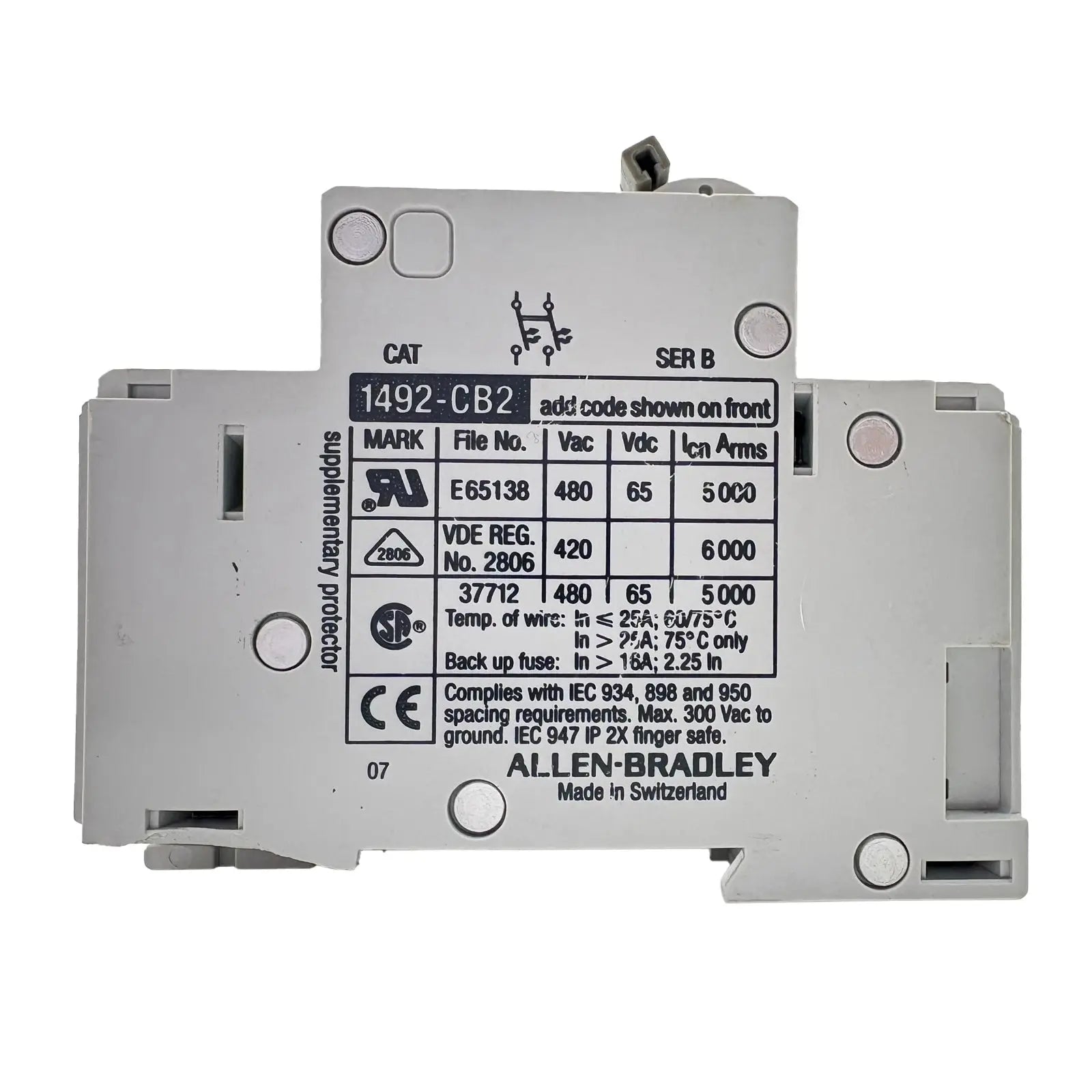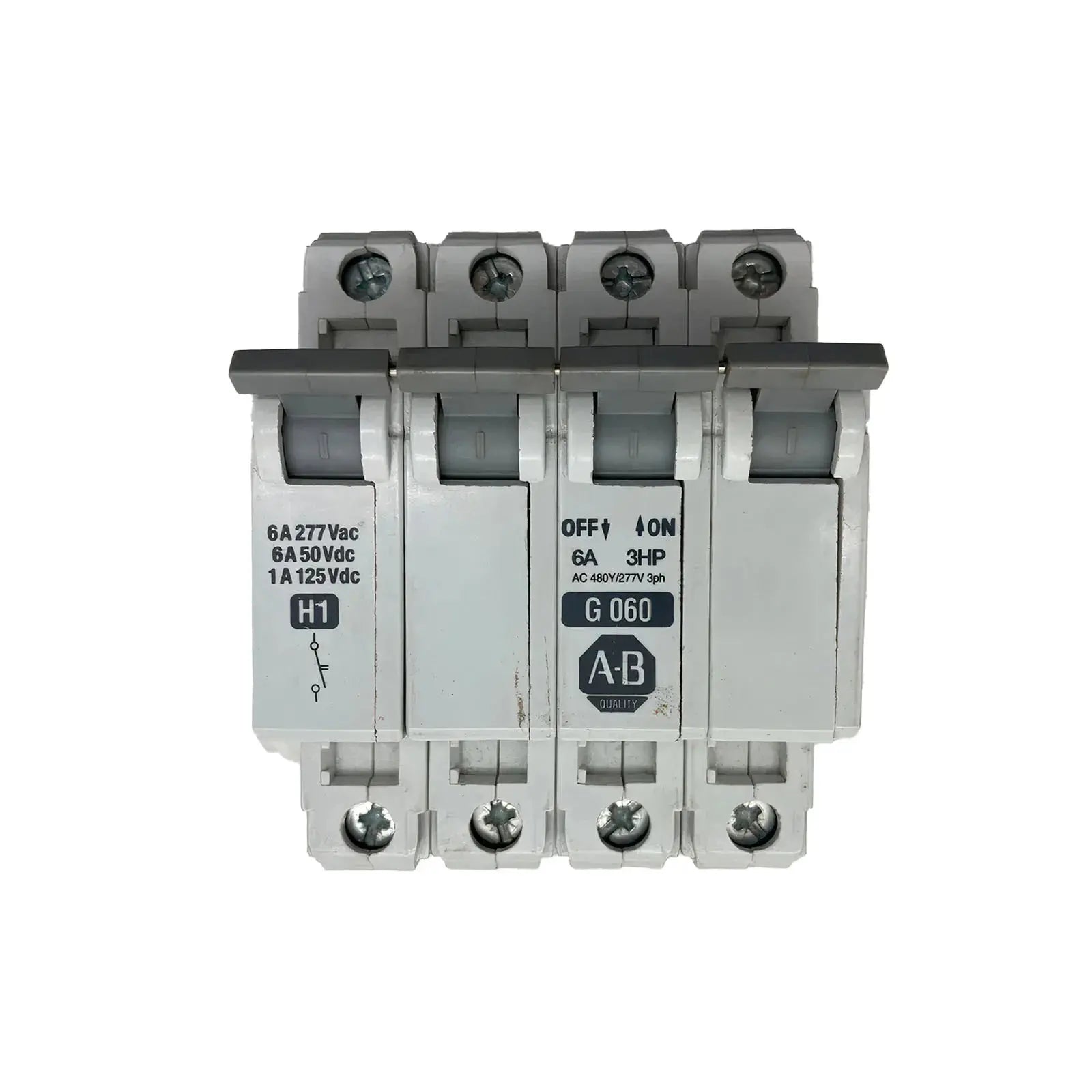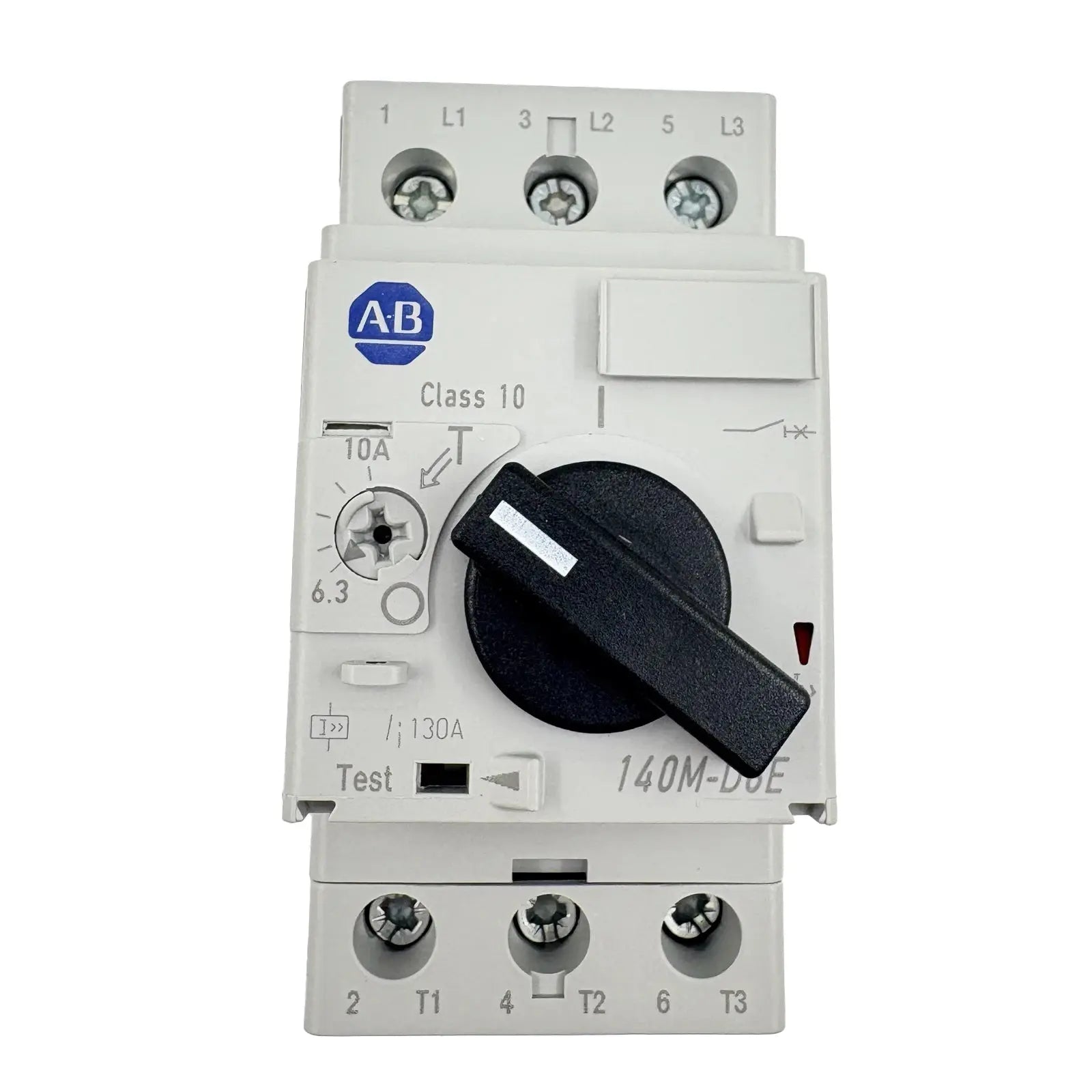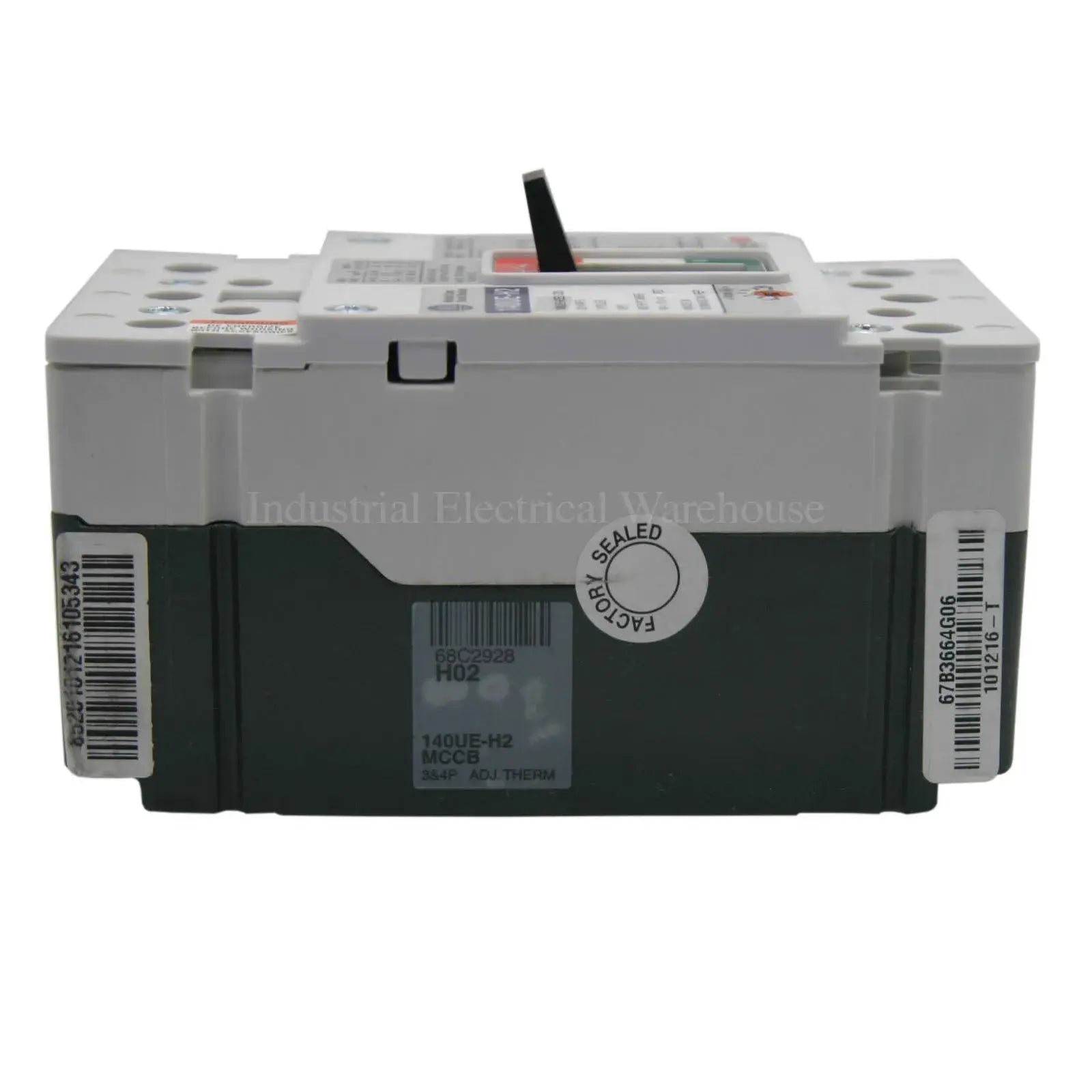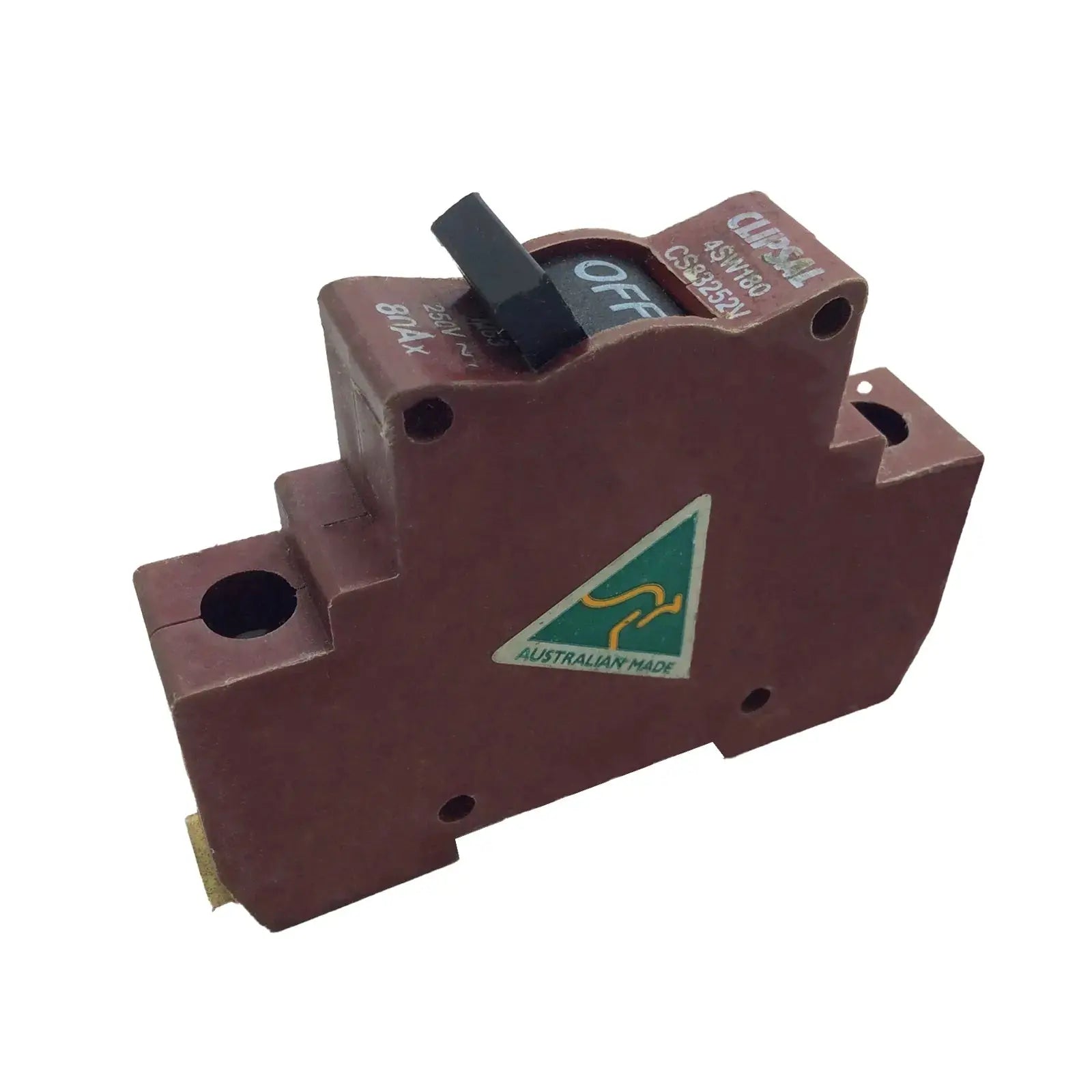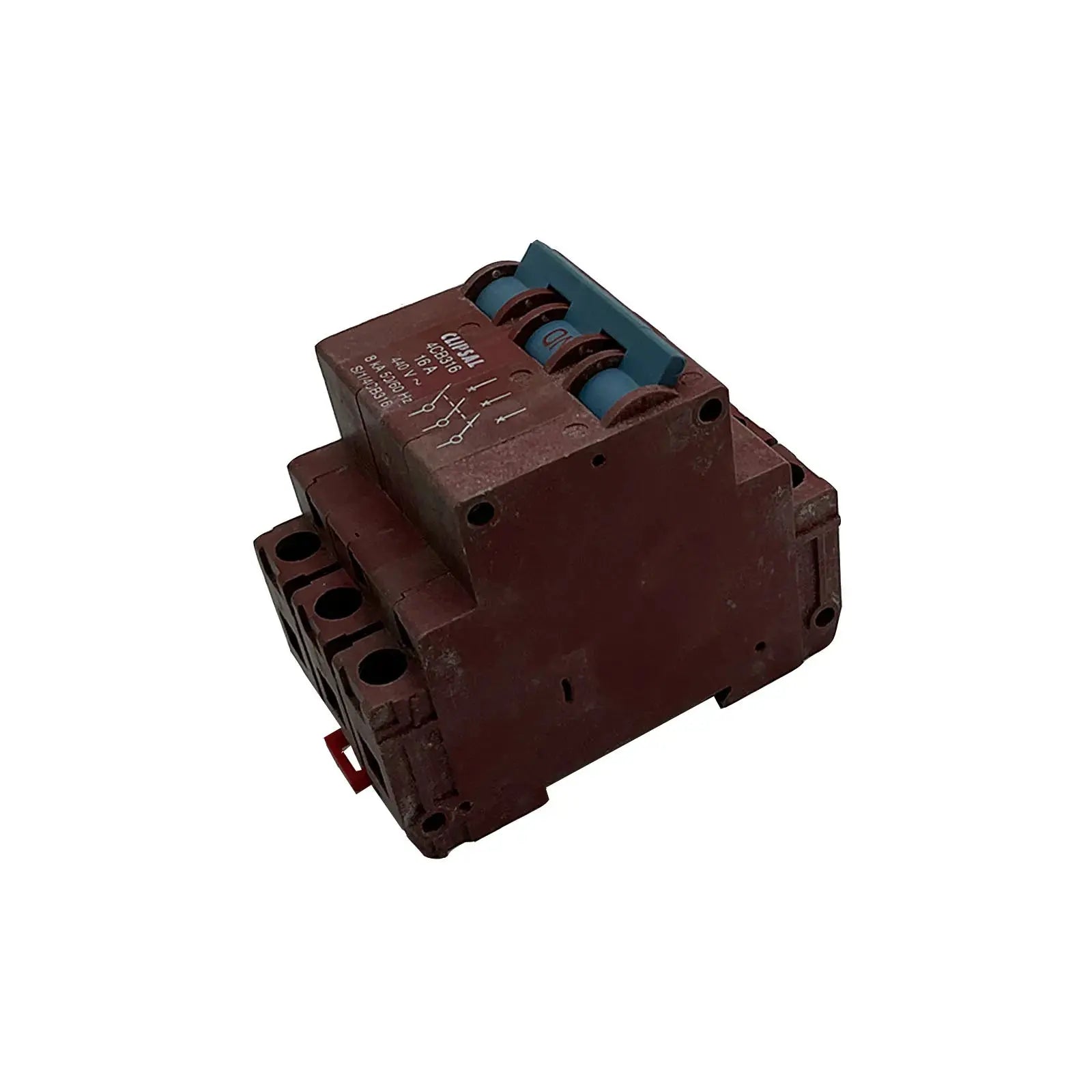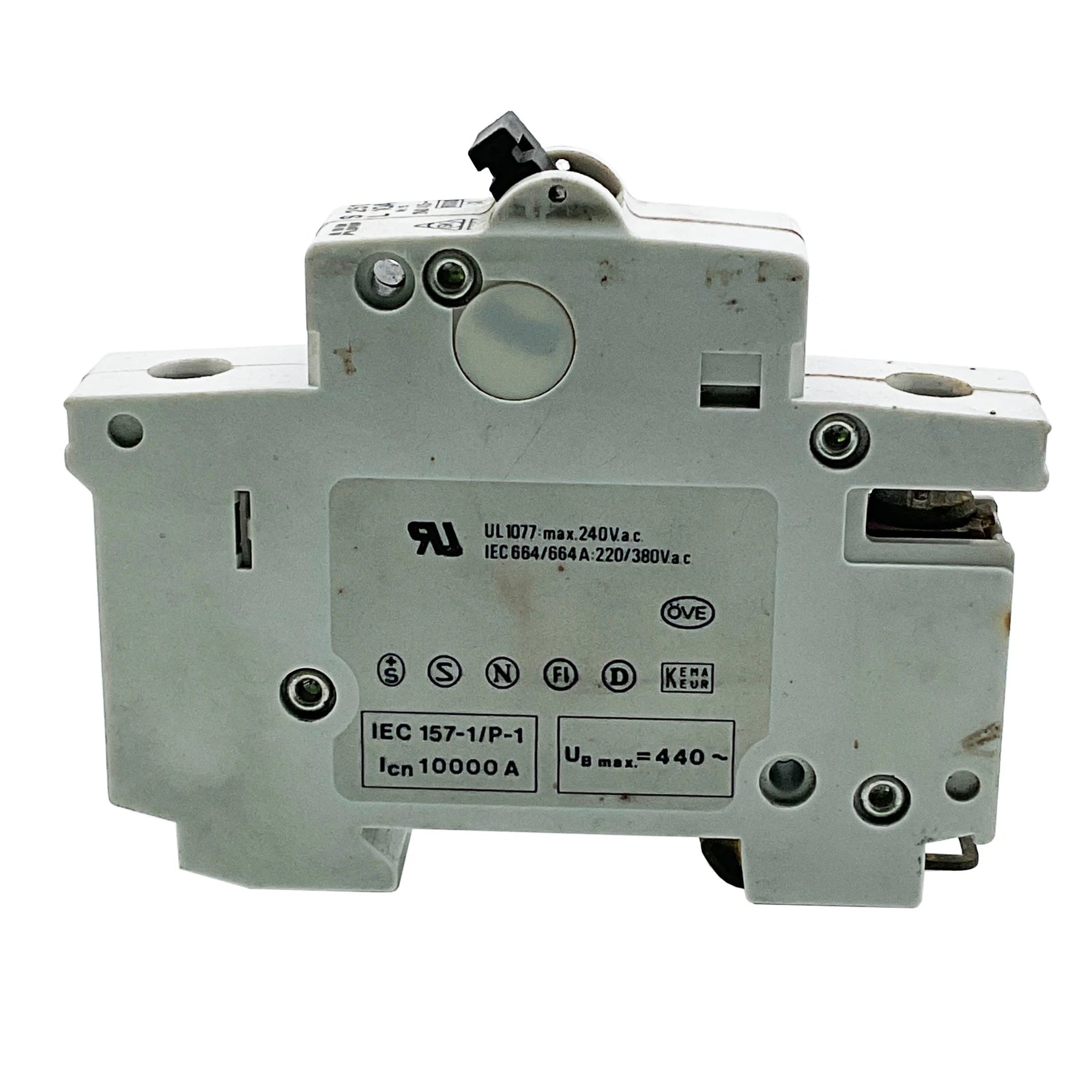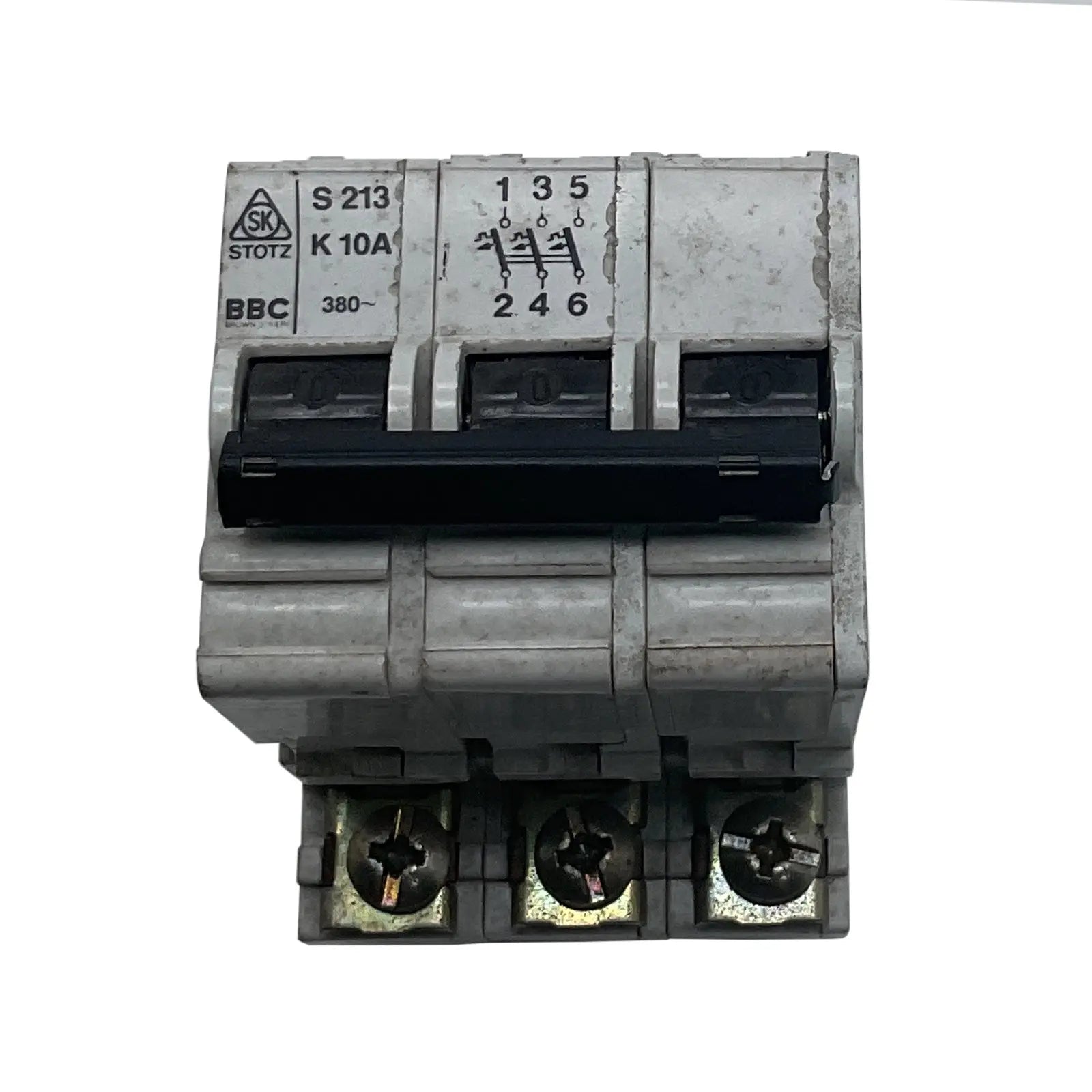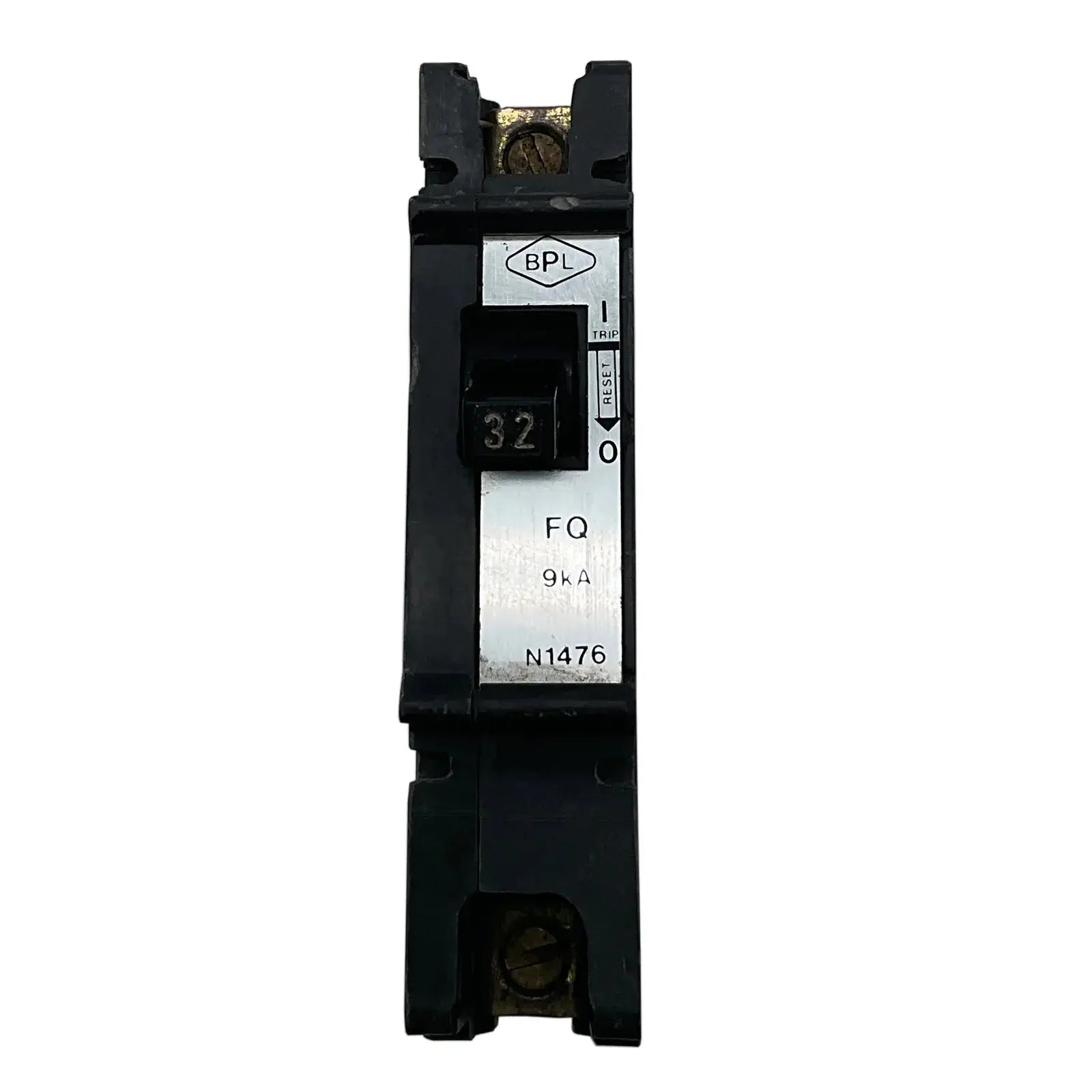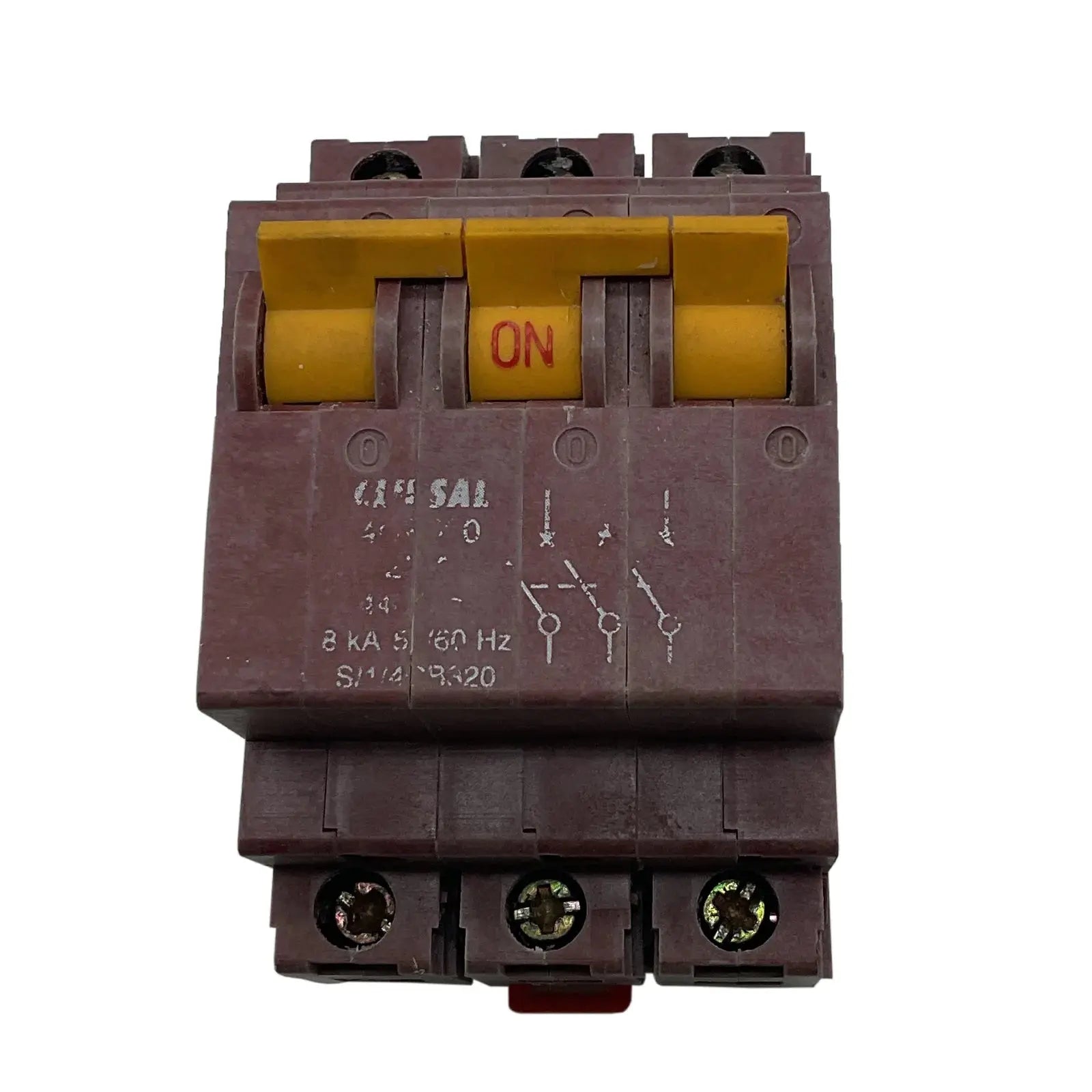Disjoncteurs : une protection fiable pour vos équipements
Les disjoncteurs sont un élément essentiel de tout système électrique. Ils jouent un rôle crucial dans la protection de vos équipements contre les dommages potentiels causés par les surcharges électriques, les courts-circuits et les défauts à la terre. Comprendre le rôle et l'importance des disjoncteurs est essentiel pour garantir la sécurité et la fiabilité de votre installation électrique. Dans cet article, nous aborderons le fonctionnement de base des disjoncteurs, les différents types disponibles, les caractéristiques clés à rechercher pour des disjoncteurs fiables, les points à prendre en compte pour choisir le bon modèle pour vos équipements, ainsi que les procédures de maintenance et de test appropriées.
Comprendre le rôle des disjoncteurs
Les disjoncteurs agissent comme des dispositifs de sécurité conçus pour interrompre le courant électrique dans certaines conditions. Ces conditions peuvent inclure un courant excessif, comme une surcharge, ou une surtension soudaine due à un court-circuit ou un défaut à la terre. En interrompant le courant, les disjoncteurs contribuent à prévenir les dommages à vos équipements et à minimiser les risques d'incendie électrique.
La fonction de base des disjoncteurs
La fonction principale d'un disjoncteur est de surveiller le courant circulant dans un circuit et de déclencher, ou d'ouvrir, le circuit lorsque celui-ci dépasse un seuil prédéterminé. Ce seuil est appelé courant nominal ou ampérage du disjoncteur. Lorsque le courant dépasse cette valeur, le mécanisme interne du disjoncteur se déclenche, provoquant l'ouverture rapide des contacts et la coupure du circuit.
Mais comment fonctionne ce mécanisme ? À l'intérieur d'un disjoncteur se trouve une lame bimétallique composée de deux métaux différents ayant des coefficients de dilatation thermique différents. Lorsque le courant dépasse la valeur nominale, la lame chauffe sous l'effet de la résistance du courant qui la traverse. En s'échauffant, les métaux se dilatent à des vitesses différentes, ce qui provoque la flexion de la lame. Ce mouvement de flexion active le mécanisme de déclenchement, ouvrant les contacts et coupant le circuit.
Une fois le disjoncteur déclenché, il peut être réarmé manuellement ou automatiquement, rétablissant ainsi le courant. Cependant, il est crucial d'identifier et de corriger le problème sous-jacent à l'origine du déclenchement, car un déclenchement répété peut indiquer un problème plus grave.
Importance des disjoncteurs dans les systèmes électriques
Les disjoncteurs jouent un rôle essentiel dans la protection de vos équipements et de votre système électrique. Ils protègent contre les surcharges, qui surviennent lorsqu'un courant trop important traverse un circuit et peut entraîner une surchauffe et des dommages matériels. Sans disjoncteur, un courant excessif peut entraîner la fonte des fils ou un dysfonctionnement de l'équipement, ce qui représente un risque pour la sécurité.
De plus, les disjoncteurs sont essentiels pour prévenir les courts-circuits, qui se produisent lorsqu'un fil sous tension entre en contact avec un fil neutre ou de terre. Les courts-circuits peuvent provoquer une surtension soudaine, potentiellement responsable d'incendies, de dommages matériels et même de chocs électriques. En interrompant le circuit, le disjoncteur empêche le court-circuit de causer des dommages supplémentaires.
De plus, les disjoncteurs offrent un niveau de sécurité supplémentaire grâce à une coordination sélective. Ainsi, dans un système électrique complexe comportant plusieurs disjoncteurs, chaque disjoncteur est conçu pour se déclencher dans un ordre spécifique, garantissant que seul le circuit défectueux est isolé, tandis que le reste du système reste opérationnel. Cette coordination sélective permet de minimiser les temps d'arrêt et facilite le dépannage et la maintenance.
En conclusion, les disjoncteurs ne sont pas de simples interrupteurs coupant le courant. Ce sont des dispositifs sophistiqués qui surveillent et protègent les circuits électriques des dangers potentiels. En comprenant leur fonction fondamentale et leur importance, vous comprendrez leur rôle crucial dans la sécurité de vos équipements et de votre système électrique.
Types de disjoncteurs et leurs utilisations
Il existe plusieurs types de disjoncteurs, chacun ayant ses propres caractéristiques et utilisations. Comprendre ces types vous aidera à choisir le disjoncteur le plus adapté à votre équipement et à votre installation électrique.
Mais plongeons plus profondément dans le monde des disjoncteurs et explorons quelques détails supplémentaires qui peuvent améliorer votre compréhension.
Disjoncteurs thermiques
Les disjoncteurs thermiques utilisent une lame bimétallique qui se plie sous l'effet d'une chaleur excessive. Cette flexion provoque le déclenchement du disjoncteur, interrompant ainsi le courant. Ce mécanisme est essentiel pour prévenir la surchauffe et les incendies potentiels.
De plus, les disjoncteurs thermiques sont utilisés non seulement dans les applications domestiques, mais aussi dans divers secteurs industriels. Par exemple, ils jouent un rôle essentiel dans la protection des équipements électroniques sensibles, tels que les ordinateurs et les serveurs, contre les surcharges thermiques.
Disjoncteurs magnétiques
Les disjoncteurs magnétiques fonctionnent grâce aux forces électromagnétiques. Ils utilisent une bobine solénoïde pour générer un champ magnétique. Lorsque le courant dépasse la valeur nominale, le champ magnétique actionne un levier, déclenchant ainsi le disjoncteur. Cette réaction rapide assure la protection des systèmes électriques et prévient les dommages causés par un courant excessif.
Outre les environnements industriels, les disjoncteurs magnétiques sont couramment utilisés dans les grands réseaux de distribution d'énergie. Leur capacité à gérer efficacement des courants élevés les rend indispensables à la protection des infrastructures critiques.
Disjoncteurs hybrides
Les disjoncteurs hybrides combinent les caractéristiques des disjoncteurs thermiques et magnétiques. Ils offrent une protection fiable contre les surcharges thermiques et les courts-circuits, ce qui les rend adaptés à un large éventail d'applications.
L'un des principaux avantages des disjoncteurs hybrides est leur polyvalence. Ils s'adaptent aux variations des conditions électriques, assurant une protection optimale de divers équipements et systèmes. Cette adaptabilité en fait un excellent choix pour les applications où la charge électrique peut varier dans le temps.
En comprenant les différents types de disjoncteurs et leurs utilisations, vous pourrez prendre des décisions éclairées pour choisir le disjoncteur le plus adapté à vos besoins spécifiques. Que ce soit pour votre maison, votre bureau ou votre installation industrielle, choisir le bon disjoncteur est crucial pour garantir la sécurité électrique et prévenir des dommages coûteux.
Principales caractéristiques des disjoncteurs fiables
Lors de la sélection d’un disjoncteur pour votre équipement, plusieurs caractéristiques clés doivent être prises en compte pour garantir une protection fiable.
Protection contre les surcharges
L'une des caractéristiques essentielles d'un disjoncteur est la protection contre les surcharges. Il doit pouvoir supporter la charge de courant maximale de l'équipement qu'il protège sans se déclencher excessivement. Recherchez un disjoncteur dont l'ampérage et les caractéristiques de déclenchement thermique sont adaptés aux exigences de votre équipement.
Protection contre les courts-circuits
Les disjoncteurs doivent également assurer une protection efficace contre les courts-circuits. Ils doivent pouvoir interrompre rapidement le circuit en cas de court-circuit, évitant ainsi d'endommager davantage l'équipement et le système électrique. Les disjoncteurs magnétiques ou hybrides sont souvent utilisés à cette fin en raison de leur temps de réponse rapide.
Protection contre les défauts à la terre
Outre les surcharges et les courts-circuits, les défauts à la terre peuvent également représenter un risque important pour vos équipements et votre système électrique. La protection contre les défauts à la terre est conçue pour détecter et interrompre les légers déséquilibres de courant entre les fils de phase et de neutre. Les disjoncteurs avec protection contre les défauts à la terre peuvent contribuer à minimiser les risques de chocs électriques et de défauts, notamment dans les zones humides ou présentant des câbles défectueux.
De plus, pour choisir un disjoncteur fiable, il est important de prendre en compte la tension nominale. La tension nominale d'un disjoncteur indique la tension maximale qu'il peut supporter en toute sécurité. Il est crucial de choisir un disjoncteur dont la tension nominale correspond ou dépasse celle de votre système électrique afin de garantir des performances et une sécurité optimales.
Un autre élément à prendre en compte est le pouvoir de coupure du disjoncteur. Ce pouvoir désigne le courant de défaut maximal qu'un disjoncteur peut interrompre en toute sécurité sans causer de dommages. Il est essentiel de choisir un disjoncteur dont le pouvoir de coupure dépasse le courant de défaut potentiel de votre système électrique afin d'éviter les pannes catastrophiques et d'assurer la protection de vos équipements.
Choisir le bon disjoncteur pour votre équipement
Choisir le disjoncteur adapté à votre équipement nécessite de prendre en compte plusieurs facteurs importants, notamment l'ampérage approprié, le pouvoir de coupure du disjoncteur et les exigences spécifiques de votre équipement.
Considérations pour la sélection d'un disjoncteur
Tout d'abord, déterminez la charge de courant maximale de votre équipement et choisissez un disjoncteur d'un ampérage approprié. Des disjoncteurs surdimensionnés ou sous-dimensionnés peuvent compromettre la sécurité et les performances de votre équipement.
Par exemple, si votre équipement consomme un courant maximal de 20 ampères, il est crucial de choisir un disjoncteur dont l'ampérage est adapté à cette charge. Choisir un disjoncteur d'intensité inférieure peut entraîner des déclenchements fréquents, perturbant ainsi le fonctionnement de votre équipement. À l'inverse, choisir un disjoncteur d'intensité supérieure à la normale peut présenter un risque pour la sécurité, car il pourrait ne pas se déclencher en cas de surcharge ou de court-circuit.
Deuxièmement, tenez compte du pouvoir de coupure du disjoncteur. Il s'agit du courant de court-circuit maximal que le disjoncteur peut interrompre en toute sécurité sans s'endommager. Assurez-vous que le pouvoir de coupure du disjoncteur est égal ou supérieur aux courants de court-circuit potentiels de votre système électrique.
Par exemple, si votre système électrique présente un courant de court-circuit potentiel de 10 000 ampères, il est essentiel de choisir un disjoncteur dont le pouvoir de coupure est capable de gérer ce niveau de courant. Choisir un disjoncteur avec un pouvoir de coupure inférieur peut entraîner une défaillance catastrophique, car il risque de ne pas pouvoir interrompre en toute sécurité les courants de défaut élevés. En revanche, opter pour un disjoncteur avec un pouvoir de coupure supérieur offre une marge de sécurité supplémentaire, garantissant une protection fiable de vos équipements.
Comprendre les valeurs nominales des disjoncteurs
Les disjoncteurs sont dotés de différentes valeurs nominales qui indiquent leurs performances et leur compatibilité avec différentes applications. Parmi les valeurs nominales courantes, on trouve la tension, le courant et le pouvoir de coupure. Familiarisez-vous avec ces valeurs nominales pour choisir un disjoncteur en toute connaissance de cause.
La tension nominale d'un disjoncteur indique la tension maximale à laquelle il peut fonctionner en toute sécurité. Il est crucial de choisir un disjoncteur dont la tension nominale correspond ou dépasse celle de votre système électrique. L'utilisation d'un disjoncteur de tension inférieure peut entraîner une rupture d'isolation et des risques électriques potentiels.
De plus, le courant nominal d'un disjoncteur indique le courant continu maximal qu'il peut supporter sans se déclencher. Il est important de choisir un disjoncteur dont le courant nominal peut supporter la charge prévue de votre équipement. Choisir un disjoncteur de courant nominal inférieur peut entraîner des déclenchements fréquents, tandis qu'en choisir un de courant nominal supérieur peut compromettre la protection de votre équipement.
Enfin, le pouvoir de coupure d'un disjoncteur indique le courant de défaut maximal qu'il peut interrompre en toute sécurité. Ce pouvoir est crucial pour garantir que le disjoncteur puisse gérer les courants de défaut potentiels de votre système électrique. Choisir un disjoncteur avec un pouvoir de coupure inférieur peut endommager le disjoncteur et le système électrique, tandis qu'un pouvoir de coupure supérieur offre un niveau de protection supplémentaire.
Entretien et test appropriés des disjoncteurs
L'entretien et le test de vos disjoncteurs sont essentiels pour garantir leur performance et leur fiabilité optimales. Des inspections régulières et un entretien professionnel permettent d'identifier les problèmes potentiels et de prévenir les pannes d'équipement.
Inspection et entretien de routine
Inspectez régulièrement vos disjoncteurs afin de détecter tout signe de dommage, comme des connexions desserrées, des composants usés ou de la corrosion. Assurez-vous que le disjoncteur est propre et exempt de débris. Si vous remarquez une anomalie ou suspectez un problème, contactez un électricien qualifié pour un diagnostic et une intervention rapides.
De plus, testez régulièrement le mécanisme de déclenchement de vos disjoncteurs. Suivez les instructions du fabricant et utilisez un équipement approprié pour simuler une surcharge ou un court-circuit afin de garantir le déclenchement normal du disjoncteur.
Tests et entretien professionnels
Bien que les inspections de routine soient essentielles, il est recommandé de faire tester et entretenir régulièrement vos disjoncteurs par un professionnel. Des techniciens professionnels peuvent effectuer des tests plus complets, tels que des tests de résistance d'isolement et des tests de temporisation des disjoncteurs, afin de déterminer l'état général et les performances de vos disjoncteurs.
Prenez des mesures proactives pour entretenir et réparer vos disjoncteurs afin d’éviter les pannes inattendues et d’assurer la protection continue de votre équipement.
En conclusion
Les disjoncteurs jouent un rôle crucial dans la protection fiable de vos équipements et systèmes électriques. Comprendre leur fonction, leurs types, leurs caractéristiques et leurs procédures de maintenance est essentiel pour garantir leur performance et leur sécurité optimales. En choisissant le bon disjoncteur, en respectant les bonnes pratiques de maintenance et en effectuant des inspections périodiques, vous pouvez minimiser les risques de dommages matériels, de dangers électriques et de temps d'arrêt coûteux. Investissez dans des disjoncteurs fiables pour protéger vos équipements et ayez l'esprit tranquille en sachant que votre système électrique est protégé.
Besoin de commandes en gros ou de recommandations d'experts sur PD-B-CB ?
Vous souhaitez commander des PD-B-CB en gros ou avez besoin d'aide pour choisir la solution industrielle idéale ? Notre équipe est là pour vous aider avec des devis personnalisés, des recommandations de produits et des conseils techniques. Que vous soyez électricien, entrepreneur ou chef d'entreprise, nous proposons des solutions sur mesure pour répondre à vos besoins.
📩 Contactez-nous ou discutez avec nous en direct pour une assistance instantanée !
Découvrez notre collection mensuelle d'offres de folie !
Profitez de réductions exceptionnelles dans notre magasin ! Découvrez les meilleures offres :
Explorez ces catégories maintenant et profitez des meilleures offres avant qu'elles ne disparaissent !
-
Tous les produits de notre gamme – Des produits de qualité supérieure sélectionnés avec soin pour vous.
-
Meilleures ventes – Articles préférés des clients et articles très demandés.
-
Offres spéciales et soldes Watts – Remises à durée limitée sur des produits incontournables.
-
Watts New – Nouveautés et dernières innovations.
-
Toutes les collections – Explorez tout ce que nous avons à offrir.
Explorez ces catégories maintenant et profitez des meilleures offres avant qu'elles ne disparaissent !
N'oubliez pas de consulter nos remises massives jusqu'à épuisement des stocks !







